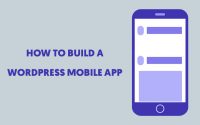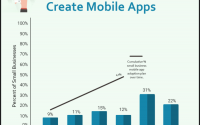Mobile App Development: Outsourcing vs DIY
There are many reasons a higher ed institution might decide to take the plunge in developing a mobile platform. One of these reasons could include admins finding it increasingly difficult to connect with their students. More often than not, emails go unchecked for days at a time (sometimes indefinitely), making student engagement harder than ever. However, it has been reported that 35% of Gen-Z college students spend 6-10 hours on their phone per day, giving institutions an alternate, modern avenue to achieve student engagement.
Once an institution has made the choice to develop a mobile platform the next step is deciding whether to build it themselves, or to partner with a mobile platform provider.
In order to paint a clearer picture, we’ve broken down mobile app implementation into 3 steps:
- Development
- Platform launch
- Post-Launch
Step 1: Development
When developing a mobile platform three of the biggest concerns include: time, cost and security. Below we’ve analyzed these concerns for both the “Do it Yourself” option, as well as the “Mobile Platform Partner” option, and have assigned a grade for each:
DIY
| Cost | Time | Security |
| Institution assumes total development cost (i.e. hosting, developer salaries, etc.) (Approx. 500K-1.5Million $) | Building a good app from scratch takes approximately 6 months to a year | Institution assumes all security responsibilities |
Grade: 35%
Mobile Platform Partner
| Cost | Time | Security |
| The cost of development is subsidized over multiple partners, making the total cost lower overall | Having already created similar platforms, the app structure is readily available, making time to launch 2-4 weeks | Partner assumes all security responsibilities |
Grade: 90%
Step 2: Platform Launch
Once the mobile platform is complete, the institution must then launch the app to their students and admin. We’ve broken this step down into two parts: Promotion and usage.
DIY
| Promotion | Usage |
| The institution must come up with a marketing strategy for the mobile platform without any prior experience | By creating an app in-house with admin/students as the developers, there would be an incentive to use the platform since it would be their own project |
Grade: 50%
Mobile Platform Partner
| Promotion | Usage |
| The mobile platform partner can guide the institution, with the help of their dedicated customer support team, to ensure an effective platform promotion | Regardless of how well a mobile platform is promoted, people are often reluctant to adopt a new system immediately. However, previous platform launches give the partner the advantage of experience |
Grade: 70%
Step 3: Post-Launch
Finally, we’ve broken down the post-launch stage into two parts: Analytics and updates.
DIY
| Analytics | Updates |
| If the institution’s mobile platform has data collection capabilities, the institution must analyze their findings on their own. If it does not, then the institution must allocate more funds to further develop the app | The institution must assume the cost for any and all updates that need to be implemented |
Grade: 50%
Mobile Platform Partner
| Analytics | Updates |
| A higher ed mobile platform provider will already have data and feedback collection integrated into the app and can assist in its analysis for an overall better user experience | Updates would be included in the partnership, assuring that there would be no hidden or unexpected costs to the institution |
Grade: 90%
Before giving it much consideration, developing a higher ed mobile platform in-house might seem like the better option initially; however, once we analyze cost, time and effort, it becomes clear that partnering with an experienced higher ed mobile platform provider is the better choice overall.
Final Grades
| DIY | Mobile Platform Partner | |
| Stage 1: Development | 35% | 90% |
| Stage 2: Platform Launch | 50% | 70% |
| Stage 3: Post-Launch | 50% | 90% |
| Final Grade: | 45% | 83% |


